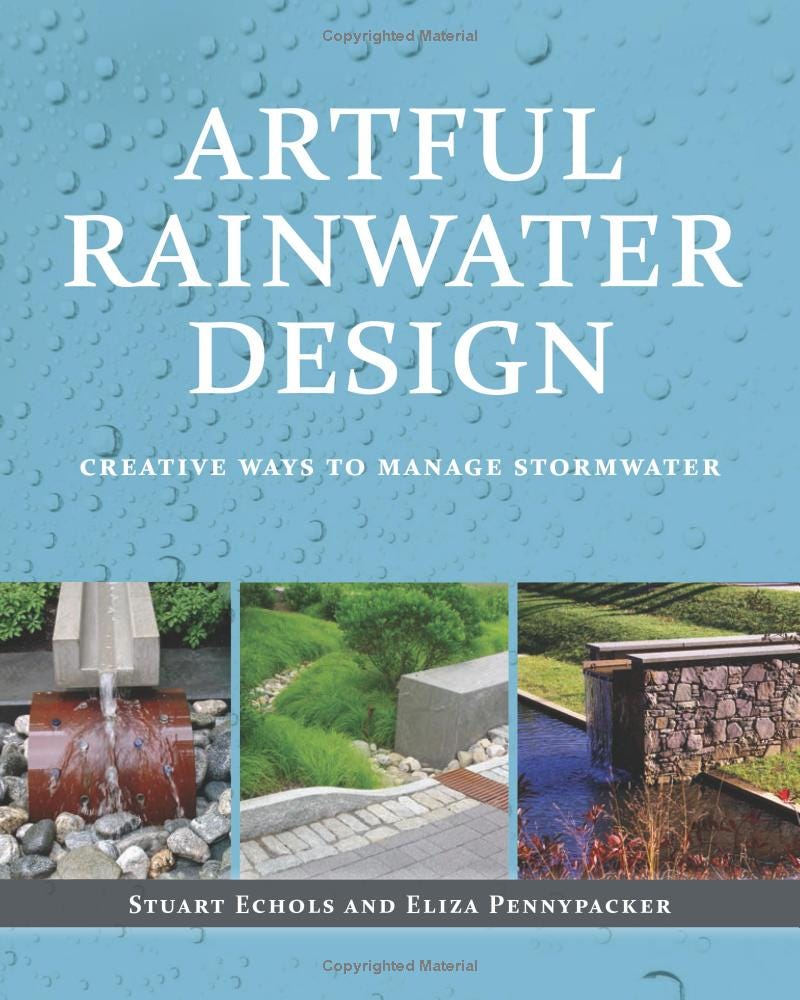
Yes – really!
Stormwater run-off and its partner-for-life non-point source pollution have come up again and again in my exhibit work. I have yet to be fully satisfied with any interactive or exhibit panel on the subject - by me or anyone else. People get the basic concept, but do they understand how much stormwater affects water quality? Do they get it enough to spur them to action? Enough to be willing to pay for new stormwater infrastructure? I have my doubts. It always sticks in my craw because it’s a super important environmental issue, and I think we museums can do better.
I do think part of the answer is that education about stormwater should take place where stormwater runoff happens and where its managed. And, several museums, such as the Rochester Museum of Science and the Louisiana Children’s Museum do that interpretation right at their stormwater management systems. For green infrastructure (bioswales, flood plains, rain gardens, etc.), that interpretation is especially important because to the untrained eye, the difference between a bioswale of native plants and a random, scruffy garden are pretty indistinguishable.

So - that’s a bit of the “learning”, arguably some of the “beauty” (if you squint) - but where’s the “joy”? That I discovered, along with more of beauty, during one of my pandemic projects. Instead of a sourdough starter, I took a starter class for a graduate certificate in Climate Change, Hazards, and Green Infrastructure Planning at University of Massachusetts, Amherst.1 I opted not to continue the program as client projects returned, but the class in green infrastructure helped me uncover a couple of inspiring projects worth sharing.
Artful (and Educational) Rainwater Design
Landscape architecture professors Eliza Pennypacker and Stuart Echols have turned their research to what they’ve coined as ‘artful rainwater design’ described by Pennypacker as ‘stormwater management that not only mitigates quality and quantity of runoff, but celebrates rainwater in a design that educates of entertains visitors.’ You might not see the need to invest in their Artful Rainwater Design book (I haven’t treated myself to it yet) but one of their papers in the Landscape Journal is worth a download for inspiration.2 Not only are there pictures of a diversity of projects, they have categorized the projects along a variety of design goals and objectives well beyond functional utility and safety: Education, Recreation, Public Relations, and Aesthetic Richness. Plenty to satisfy the geekiest among us!

The Sewer Commission and the Schoolyards
As part of city-wide effort to better manage stormwater, the Boston’s Sewer and Water Commission funded the overhaul of five Boston public schoolyards as demonstration stormwater management systems focusing on green infrastructure. More than just managing run-off, these projects completely reshaped how the campuses are used. Cracked pavement recess yards have been replaced by permeable playing fields, actual play equipment over safety playground surfaces, and pollinator gardens of native flowers. Each yard is an outdoor classroom where students can measure and compare water flow in different conditions. My favorite is at the Rafael Hernandez School in the Roxbury neighborhood. The design recreates an urban hardscape “control” and green infrastructure system, with rainwater channels of different depths and profiles running through both. A rain collection cistern allows classes to send water through the channels on demand, deploying dams to observe water flowing over different terrains and bioretention areas. The school yards also serve as badly-needed public parks for their neighborhoods - and as green infrastructure demonstration sites for other Boston agencies. I can’t do the project justice, so please check out the websites of the two main project contractors, Horsley Witten Group and Offshoots, Inc. and of course the curriculum teacher’s guide.
Multivalence and “Expensive Money”
A museum client (Hi Marya!) recently talked about wanting the historic objects in the exhibit to be multivalent - to illustrate multiple stories, concepts, and perspectives at once. Getting that kind of bang for the buck is something I try to encourage in all exhibit projects. Capital project money is “metabolically expensive” to acquire. Raising it is almost always done on top of operational fundraising ,and carrying out capital projects is often an episodic add-on to regular workloads. So my thinking is that every exhibit should have “stretch goals” beyond the exhibit learning goals: build internal capacity, reach new audiences, establish new partnerships, prove a concept for the next campaign. That’s what’s beautiful about these stormwater projects - they accomplish multiple goals at once. (Designers will recognize these multiple goals as creative constraints.)
I am sure there are more examples out there. If you’ve got a beautiful, whimsical, educational, or otherwise just plain wonderful stormwater project going on - please let me know, so I can share it out!
~ Betsy Loring3
The Planning-Curious Museum Person
Sharing stories and ideas for other Planning-Curious Museum People and for Museum-Curious Planning People.
Even though I opted not to continue the program, I recommend checking it out if you want some additional schooling without pursuing a full degree or you’re thinking about moving to a museum-adjacent field. The climate change certificate is only five courses. There’s also a 15-credit Cultural Landscape Management certificate that could be super exciting for you anthro/history/culture nerds. I am sure there are similar programs at other schools as well – do some digging!
Echols, Stuart, and Eliza Pennypacker. “From Stormwater Management to Artful Rainwater Design.” Landscape Journal 27, no. 2 (2008): 268–90. http://www.jstor.org/stable/43332452.
Betsy Loring is founder of expLoring exhibits & engagement. She has over 20 years’ experience in project management and exhibit development in multidisciplinary, indoor and outdoor museum settings. Her services include exhibit master planning, content and interactive development, and writing, with a focus on hands-on STEM. She also offers staff training in exhibition planning, formative evaluation, and prototyping. Special interests include multi-institutional collaborations, peer-to-peer professional development, and of course – collaboration with municipal planning practitioners.


